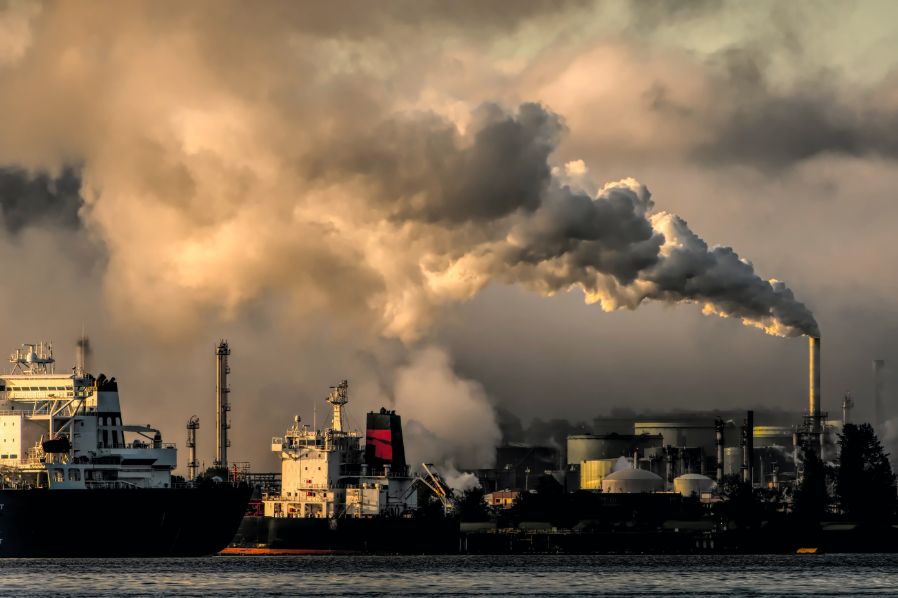According to new data, global emissions from fossil fuels are likely to reach record highs this year, putting countries further off the path to halting global warming.
According to researchers, global fossil fuel emissions will likely hit record highs in 2022 and are not yet showing any signs of declining. This trend is moving nations further away from their goal of halting global warming.
According to new data from the Global Carbon Project, nations are expected to burn coal, natural gas, and oil for energy this year, emitting about 36.6 billion tons of greenhouse gas carbon dioxide.
That’s 1 percent more than the world emitted in 2021 and slightly more than the previous record in 2019, which came before the coronavirus pandemic caused a temporary drop in global energy use and emissions.
The research was presented at the UN climate change summit in Sharm el Sheikh, Egypt, where world leaders gathered to discuss ways to prevent catastrophic warming.
Scientists have warned that in order to stabilize global temperatures and reduce the risks of lethal heat waves, sea-level rise, and ecosystem collapse, the entire world will need to stop adding carbon dioxide to the atmosphere by about the middle of the century.
That deadline is getting harder to hit, experts said, with each passing year.
“Every year that emissions go up makes it that much more challenging to bring them back down again by a certain date,” said Glen Peters, a research director at the Center for International Climate and Environmental Research in Oslo, which is one of the more than 100 scientists working on the study.
The majority of the world’s emissions from fossil fuels are produced by a relatively small number of nations, with China being responsible for 32% of them, the US for 14%, the EU for 8%, and India for 8%.
As the pandemic’s lingering aftershocks and Russia’s invasion of Ukraine sent shockwaves through the world economy, this year saw some unusual energy trends.
This year, China’s emissions are expected to drop by about 0.9 percent, marking the first decrease since 2016, as decreased use of fossil fuels and cement was caused by frequent coronavirus lockdowns and a slowdown in real estate development. The once-insatiable demand for coal in China has largely maintained in 2022 thanks to the rapid growth of wind and solar energy.

In Europe, emissions are also expected to drop by about 0.8 percent this year, largely driven by a steep fall in natural gas consumption after Russia cut off supplies. As nations like Germany and Austria restarted long-dormant coal-fired power plants to address their energy shortages, that was only partially offset by an increase in coal use.
In contrast, it is predicted that emissions in the US will increase by about 1.5% this year due to a sharp increase in natural gas consumption as the economy improved. Oil emissions are also increasing as air travel returns to pre-pandemic levels.
The largest single contributor to the rise in carbon dioxide globally is India, where fossil fuel emissions are anticipated to rise by almost 6%. India recently surpassed the European Union as the world’s third-largest emitter, although its per-person emissions are just one-third of those of Europe.
Fossil fuel emissions increased globally by about 1.7% this year. Due in large part to many nations switching to the highly polluting fuel in response to skyrocketing natural gas prices, coal emissions are expected to reach record highs.
One big question is whether fossil fuel emissions will continue to increase in the years ahead.
According to a recent report by the International Energy Agency, a reputable forecaster, the demand for fossil fuels will probably peak this decade and then level off. One major reason is that many governments have responded to the war in Ukraine by enacting stronger policies to shift away from oil, gas, and coal.
For instance, the US Congress authorized $370 billion in spending for the installation of wind turbines, solar panels, nuclear power plants, hydrogen fuels, electric cars, and electric heat pumps.
The organization also estimated that if it weren’t for the rapid global adoption of wind turbines, solar panels, and electric vehicles, the increase in fossil fuel emissions this year would have been three times as large.
“Our numbers show that the current crisis could well be a turning point in the history of energy,” said In a current interview, Fatih Birol, the organization’s executive director.
Some encouraging news can be found in the emissions data that was released on Thursday. Over the past two decades, it appears that the annual amount of carbon dioxide released by deforestation and changes in land use has decreased, reaching approximately 3.9 billion tons in 2022. Once that is included, humanity’s total carbon dioxide emissions from fossil fuels and land use have stayed roughly flat since 2015.

According to researchers, part of the explanation is that forests appear to be growing or recovering in many places, including on European farmland that has been abandoned. The carbon dioxide in the atmosphere is absorbed by those trees as they grow. That has assisted in partially offsetting the emissions caused by deforestation, which are still stubbornly high in places like Brazil, Indonesia, and the Democratic Republic of the Congo.
However, there are significant uncertainties surrounding land use emissions, and it is still too early to determine whether this trend is stable, according to Julia Pongratz, a geographer at the University of Munich who worked on the report.
While it is relatively simple to calculate how much oil, gas, and coal each country uses, it is much more difficult to calculate how much carbon dioxide is actually released when farmers clear forests or burn peat lands.
Under the Paris agreement in 2015, world leaders agreed to limit total global warming to “well below” 2 degrees compared to preindustrial levels, and to make a concerted effort to limit warming to 1.5 degrees Celsius (3.6 degrees Fahrenheit). Scientists warn that the world has already warmed by 1.1 degrees Celsius, and with every additional fraction of a degree, tens of millions more people will be exposed to deadly heat waves, food shortages, and water shortages.
The most recent information indicates that there is not much time left to accomplish those goals. The world would likely release enough carbon into the atmosphere to surpass the 1.5-degree Celsius threshold within nine years and the 2-degree Celsius threshold within thirty years, according to the researchers, if emissions simply stayed flat at levels from 2022.
“On our current course, without massive cuts in emissions, we’re going to exhaust our remaining carbon budget very, very quickly,” said Pierre Friedlingstein, a climate scientist at the University of Exeter, who helped led the research.
Reference: https://www.nytimes.com/2022/11/10/climate/carbon-dioxide-emissions-global-warming.html
- Advantages & Disadvantages of Tidal Energy: Detailed Guide
- Coronavirus Australia PM Albanese Tests Positive for Covid-19, Delays Energy Price Talks
- Ukraine War: Germany to Cover Energy Bills as Gas Prices Soar
- Xi: China Looks to Boost Energy Partnership With Russia
- Shell Buys Nature Energy in US$2 Billion Push into Biogas
